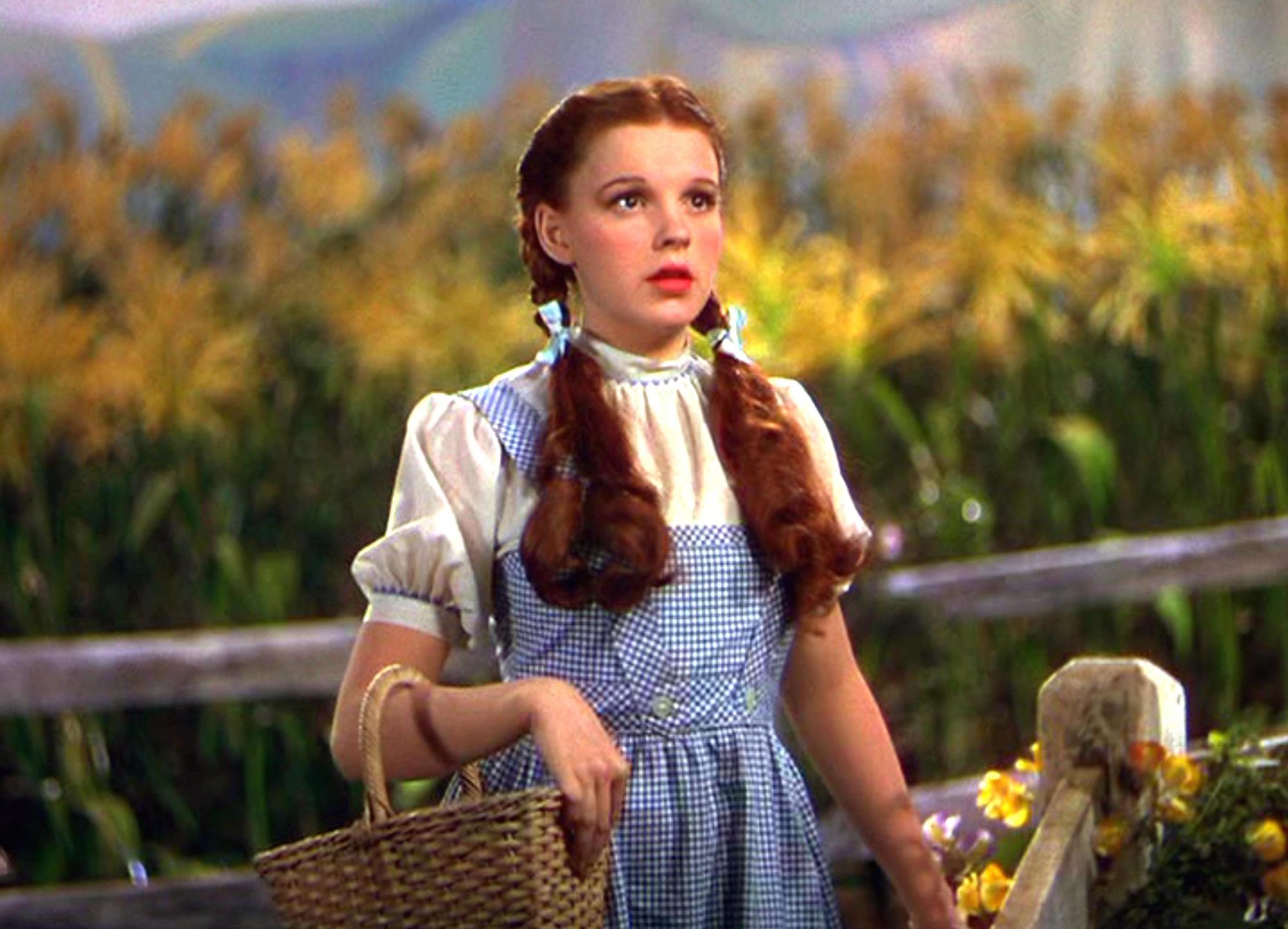Editor’s Note: Delving into the archives of pop culture history, “Remember When?” is a new series offering a nostalgic look at the celebrity outfits that defined their eras.
Remember when you first saw a young Judy Garland appear on screen in a gingham pinafore as Dorothy Gale in “The Wizard of Oz”?
It was a blue and white dress with a fitted bodice and straps fixed at the front and back by two mother-of-pearl buttons. The pinafore was worn over a high-necked cream blouse with puffed sleeves, and sometimes incongruously paired with sparkly red shoes.
You may not have noticed the dress at the beginning of the classic 1939 film. The opening scenes were shot in black and white and later colored sepia to emphasize the difference between a drab Kansas farm and the sensory overload that awaited in a land of munchkins and flying monkeys.
It was only after the tornado picked up Dorothy’s house and sent it plummeting “many, many miles east of nowhere” that the film transported its audience into the amazing land of Oz – and the relatively new process of Technicolor. We could see for the first time that Dorothy’s dress was blue, and this was definitely not Kansas. “We must be over the rainbow!” Dorothy says to a bewildered-looking Toto.
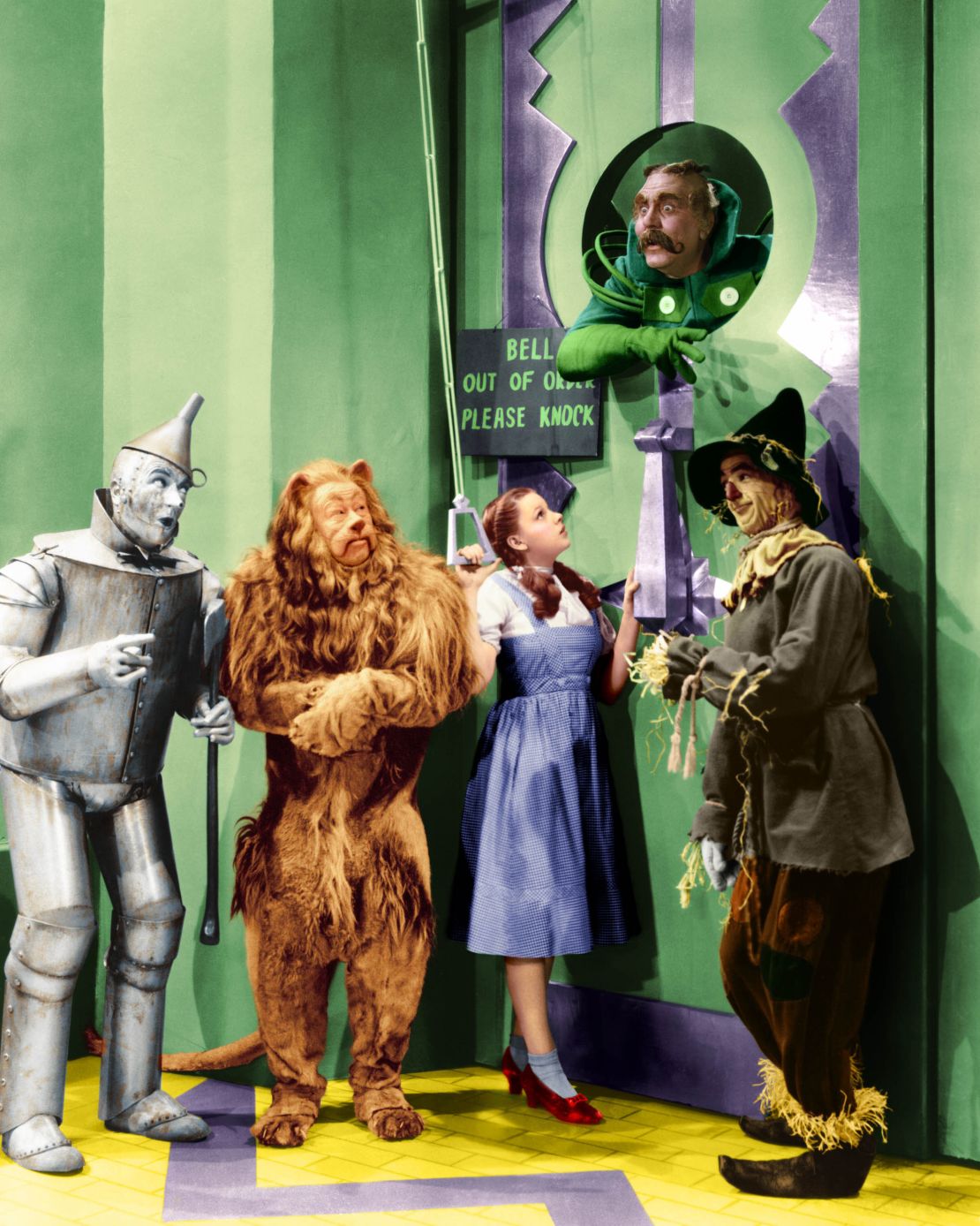
“The Wizard of Oz” wasn’t the first film made using the complex new three-strip cameras, but it is perhaps the most memorable because the storyline itself is infused with color: the yellow brick road, the Emerald City, those ruby slippers. Technicolor made them all pop on screen.
Dorothy’s dress was perhaps the most mundane costume in the entire film, though that again was a deliberate move by Hollywood film studio Metro-Goldwyn-Mayer (MGM) to emphasize the difference between the girl from Kansas and the world imagined by American author L. Frank Baum.
Baum’s series of “Oz” books had enthralled readers since 1900 and “The Wonderful Wizard of Oz” had already been adapted several times on stage and screen, so a lot was riding on the Hollywood version and its young star Judy Garland, who was then 16 years old.
Born Frances Ethel Gumm in 1922, the youngest of three sisters, “Baby” Gumm was pushed onto the stage at a young age by a showbiz family who was convinced she had something special. By the time “Oz” came around, the Gumm Sisters had become the Garland Sisters and “Frances” had been traded for the zingier “Judy.” “The Wizard of Oz” was to be her big break.
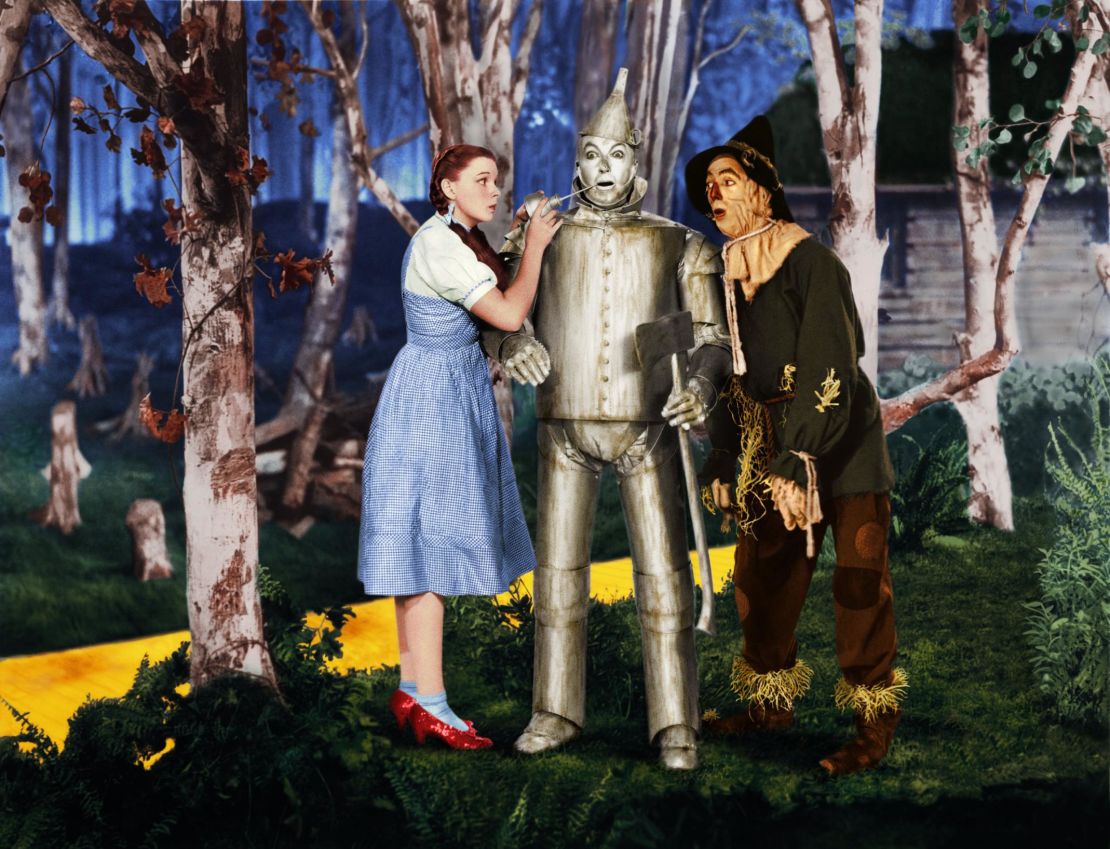
The filming schedule was intense and there were few protections, if any, for actors. Garland later revealed she was given pills to keep her energy up, and others to put her to sleep. The cycle of drug abuse contributed to her early death at the age of 47 in 1969.
If clothes could talk, Garland’s Dorothy costume would reveal a punishing regime. When it went up for auction in 2015, sweat stains could still be seen around the neck of her blouse. Such was demand for the dress that three bidders pushed the price well beyond Bonham’s pre-sale estimates of between $800,000 and $1.2 million. “As we witnessed today… the dress is considered a true and timeless icon of classic Hollywood,” said Bonhams’ Director of Entertainment Memorabilia, Catherine Williamson.
The final price was $1.56 million, including commission, but the dress is not the most expensive “Oz” costume on record. That honor goes to the Cowardly Lion, whose suit – made of real lion skin and fur – sold for more than $3 million in 2014.
Dorothy’s dress was designed by MGM’s chief designer Gilbert Adrian (known simply as Adrian), who created every costume in the film, from the Scarecrow’s patchwork trousers to the munchkins’ avant-garde coats.
Adrian designed several dresses for Dorothy, but this was the style she wore for the duration of the film. An earlier, blue version with polka-dot trim and puffed sleeves was paired briefly with blond wig, but both were thrown out in favor of a more natural look. They also eased up on the makeup. This farm girl was no femme fatale.
Perhaps even more famous than the dress were Dorothy’s ruby slippers, gifted to her by Glinda the Good Witch. In reality they were also designed by Adrian, who dyed a pair of pumps red and covered them in sequins. (In Baum’s book, the shoes are silver, but the filmmakers wanted more bling).
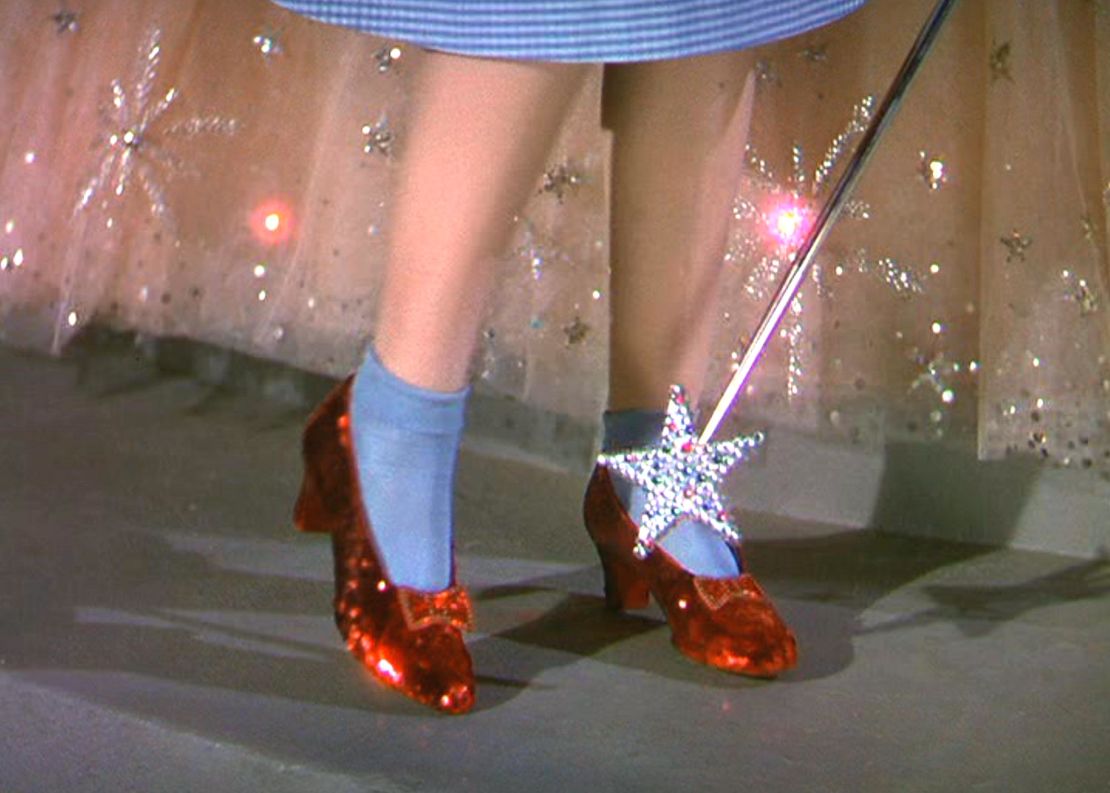
A pair of the shoes is now on display at the National Museum of American History after conservators spent more than one year trying to work out how to stop the sequins from losing their sparkle.
That particular pair was made up of mismatched shoes (#1 Judy Garland and #6 Judy Garland, according to their labels), but in 2018 the FBI recovered another two shoes that had been stolen from the Judy Garland Museum in Minnesota in 2005 to create two matching pairs.
It’s believed the shoes – and the dress – were originally in the possession of MGM costume designer Kent Warner, who was involved in a big auction of the studio’s memorabilia in 1970. He sold the dress through Christie’s in 1981 and it was sold again in 2012 for $490,000.
The pinafore was a far cry from the glamorous gowns that Adrian designed for the era’s other leading ladies, including Greta Garbo, Jean Harlow, Katharine Hepburn and Joan Crawford. Though, he is perhaps best known for introducing shoulder pads into women’s fashion in the 1940s – a trend that reappeared in the 1980s and most recently in Fall-Winter 2018 collections by Tom Ford, Saint Laurent and Gareth Pugh.
Dorothy’s dress is also making something of a comeback with the recent popularity of prairie and Victorian dresses. “A preoccupation with high necklines, ruffled details, floor-sweeping lengths and long sleeves a la Dorothy Gale is making a comeback once more,” Elle magazine noted in August.
Devotees aren’t necessarily attempting to channel the look of 12-year-old girl, instead it is considered a natural reaction to previous trends to bare all.
New York label Batsheva captured the look in its collection of high-necked, frilled dresses, which are more than a little Dorothy-esque. However, far from condoning old-fashioned feminine repression, Batsheva said it takes “elements symbolic of restraint” and gives them a “modern inflection.” British label The Vampire’s Wife does the same with dresses that ooze glamor and have been seen everywhere from the red carpet to royal weddings.
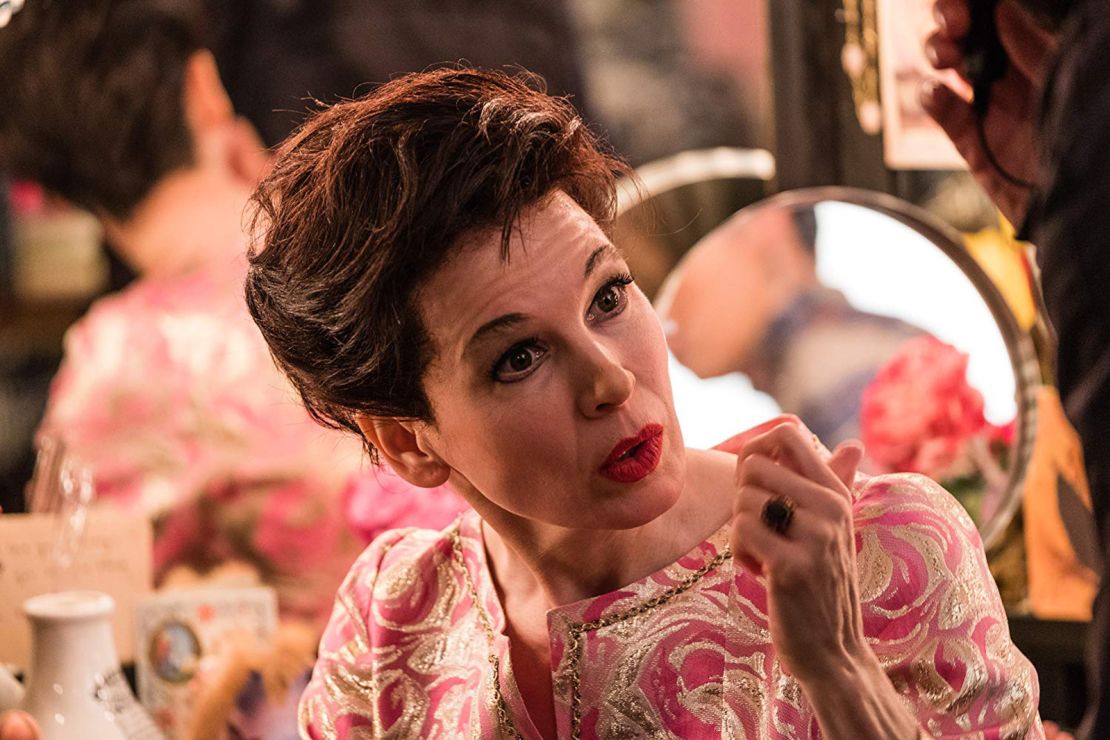
More flashbacks to pinafores and puffed sleeves, both indelible parts of Garland’s storied career, can be expected when the biopic “Judy,” starring Renée Zellweger, premieres Friday.
The movie begins when Garland is in her mid-40s, decades after her starring role in “Oz,” but Zellweger’s rendition of “Somewhere Over the Rainbow” should bring those childhood memories flooding back.

